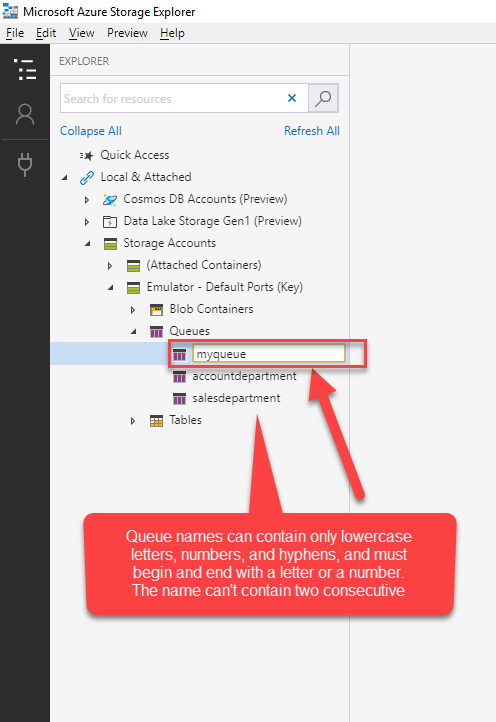

So I had to open my command prompt at C:\Program Files (x86)\Microsoft SDKs\Azure\Storage Emulator (or run from the Window run/search textbox “Microsoft Azure Storage Emulator” to get a command prompt which will already have the emulator running and offers a CLI to interact with the emulator) and from here you can check the status, start, stop and create local storage using AzureStorageEmulator.exe. This firstly resulted in no data in the table storage and then a 400 bad request. Microsoft Azure Storage Explorer can be used to view the storage data on your local machine/via the emulator and when you open the Development account in the Local and Attached Storage Accounts this will run the emulator, however I had several problems when running my client code.
#Microsoft azure storage emulator 4.1 install#
Note: If not already installed, install Azure Storage Emulator from Īnd Azure storage emulator will be installed inĬ:\Program Files (x86)\Microsoft SDKs\Azure\Storage Emulator Table.Execute(TableOperation.InsertOrMerge(p))

Var table = client.GetTableReference("plants") Var client = storageAccount.CreateCloudTableClient() Var storageAccount = CloudStorageAccount.Parse(
#Microsoft azure storage emulator 4.1 code#
Now the following code (taken from my Azure table storage post) will use the local storage/Azure storage emulator. In your App.config you need to have the following but ofcourse it’s more likely we’d normally want to test our code using an offline solution, hence it’s time to use the storage emulator. For all of my posts on using Azure Storage I’ve been using my online account etc.


 0 kommentar(er)
0 kommentar(er)
